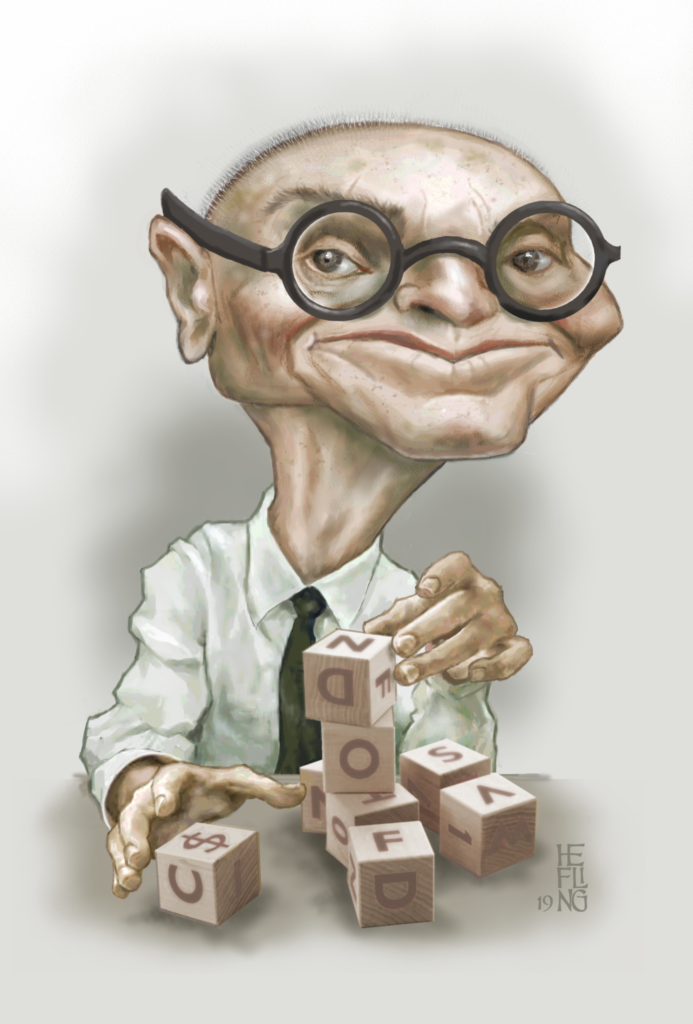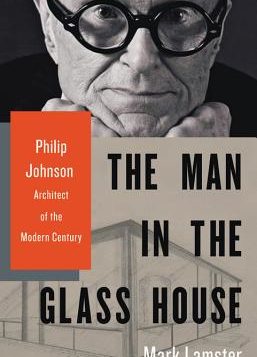 The Man in the Glass House: Philip Johnson,
The Man in the Glass House: Philip Johnson,
Architect of the American Century
by Mark Lamster
Little Brown. 529 pages, $35.
PAUL RUDOLPH hit the nail on the head when he introduced his fellow architect Philip Johnson to an audience at Yale in February 1959 by observing: “At this time he seems to be the most advanced candidate as the enfant terrible of the twentieth century.” An enfant Johnson was: impishly provocative in his art, childishly innocent of the moral compromises of his politics and his architectural practice. Pretty terrible, too: by various accounts a plagiarist, a sexual predator, a fascist, a sycophant, a snob, and an all-around jerk, Johnson appears to have possessed no inner lodestar other than his utter and uncompromising narcissism. Somehow, no one—except for a couple of drill sergeants during World War II—seems to have seen through all this bullshit. And when Rudolph made his pronouncement in 1959, Johnson still had 46 years to live. Across the entire century between his birth in Ohio in 1906 and his death in 2005 at the age of 99, he remained one of America’s most visible and transformative builders.
The Man in the Glass House, Mark Lamster’s fine new biography of Philip Johnson, attempts to sort it all out. Heir to a portion of the Alcoa fortune, Johnson squeaked out a degree at Harvard while setting himself up at New York’s new Museum of Modern Art under director Alfred H. Barr. Johnson joined a powerful gay circle at MoMA that included collector Lincoln Kirstein, curator Jere Abbott, and architectural historian Henry-Russell Hitchcock. Gaining expertise required travel in Europe, so in the 1930s Johnson wandered the continent, where he fell under the æsthetic and political spell of fascism. He returned to Ohio, stumped for demagogue Father Charles Coughlin, and published chatty essays such as “Mein Kampf and the Business Man.” By September 1940, Harper’s listed Johnson as one of “the American Fascists”; at the FBI, J. Edgar Hoover quietly opened a file.
Lamster, the architecture critic for the Dallas Morning News, walks us through Johnson’s career from the sublime to the subpar. (Anyone who has entered the Boston Public Library or NYU’s Bobst Library will agree that Johnson was capable of plenty of the latter.) The Man in the Glass House traces the steady expansion of Johnson’s architecture practice—all the more remarkable for the fact that he was never formally licensed as an architect—and conveys the incessant New York sociability he carried out from Table 32 at the Four Seasons restaurant.
Lamster makes a compelling case that Johnson was an architect of the “modern century.” For one thing, he helped to define it. From his perch at the Museum of Modern Art, he introduced Americans to what he called the International Style. Walter Gropius and his comrades at the Bauhaus thought “style” was a mischaracterization and carped as Johnson reduced Modernism from a political commitment to an æsthetic vocabulary. Unperturbed, Johnson went on to collaborate with Mies van der Rohe on New York’s Seagram Building, designed the New York State Theater at Lincoln Center, and built a bizarre pavilion in Queens for the 1964 World’s Fair. Bored, creatively exhausted, or simply hungry for more press attention, he soon turned to historic building styles. He protested to save Penn Station and attached himself to the emerging trend of postmodernism, most memorably in his 1984 AT&T Building, which rises to exorbitant ornamental curlicues in midtown Manhattan.
 Johnson’s professional ambition was matched only by his prodigious sex life, which remains in the background of The Man in the Glass House. Lamster introduces Johnson’s various partners but pays them little attention, even David Whitney, Johnson’s partner of more than forty years. A remarkable personal history nevertheless emerges. Drawing on dozens of interviews and the architect’s own archives, Lamster reconstructs Johnson’s life as a gay man, an identity he embraced as a young adult and did almost nothing to conceal. Johnson wrote his mother about his psychological struggles, his romantic crushes, and even (without much euphemism) his sexual conquests. In 1926, he wrote her from London that the British “look so much better than our men. I am doing my best not to succumb at all.” Lamster relies heavily on Philip Johnson: Life and Work, a 1994 biography by Franz Schulze, which was both more revelatory of Johnson’s sexuality and more preoccupied by it. At times, though, Lamster adds new material. In an interview, Robert Finkle, a protégé, recalled Johnson’s advances unfondly: “I think he was preying on me.”
Johnson’s professional ambition was matched only by his prodigious sex life, which remains in the background of The Man in the Glass House. Lamster introduces Johnson’s various partners but pays them little attention, even David Whitney, Johnson’s partner of more than forty years. A remarkable personal history nevertheless emerges. Drawing on dozens of interviews and the architect’s own archives, Lamster reconstructs Johnson’s life as a gay man, an identity he embraced as a young adult and did almost nothing to conceal. Johnson wrote his mother about his psychological struggles, his romantic crushes, and even (without much euphemism) his sexual conquests. In 1926, he wrote her from London that the British “look so much better than our men. I am doing my best not to succumb at all.” Lamster relies heavily on Philip Johnson: Life and Work, a 1994 biography by Franz Schulze, which was both more revelatory of Johnson’s sexuality and more preoccupied by it. At times, though, Lamster adds new material. In an interview, Robert Finkle, a protégé, recalled Johnson’s advances unfondly: “I think he was preying on me.”
Lamster shows that critics sometimes reported Johnson’s sexuality in “coded language” about the “bachelor architect.” Lamster, by contrast, is after more demonstrable connections between architecture and sexuality. A Johnson employee recalled that the boss proposed to design for the Four Seasons a “discreet gentlemen’s club” with “coarse concrete walls painted a metallic gold.” Lamster is hardly going out on a limb in describing it as a gay bar, “a gloriously debauched room for the rough trade.” (It was never built.) Johnson’s architecture reflected his personality, including his sexual orientation, so inevitably the two are interconnected. So much display, so much provocation, so much metallic gold, so much … camp.
That’s not the first word most visitors would use to describe Johnson’s signature building, the Glass House, a residence he built for himself in New Canaan, Connecticut, in 1949. As a modernist provocation in a genteel suburban landscape, the Glass House is the perfect summation of the life and work of the enfant terrible. An intricate dance of exhibitionism and concealment, it is also an apt metaphor for the man himself: designed to show that he had nothing to hide yet desperately eager for your attention. For Johnson surely believed, if he believed anything at all, in his version of Oscar Wilde’s witticism: that the only thing worse than being looked at is not being looked at.
Christopher Capozzola, a longtime contributor to these pages, is professor of history at MIT.






